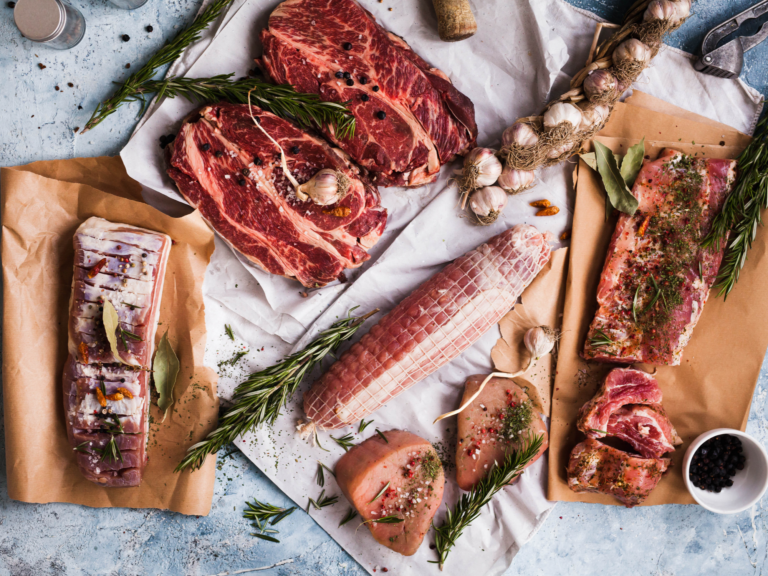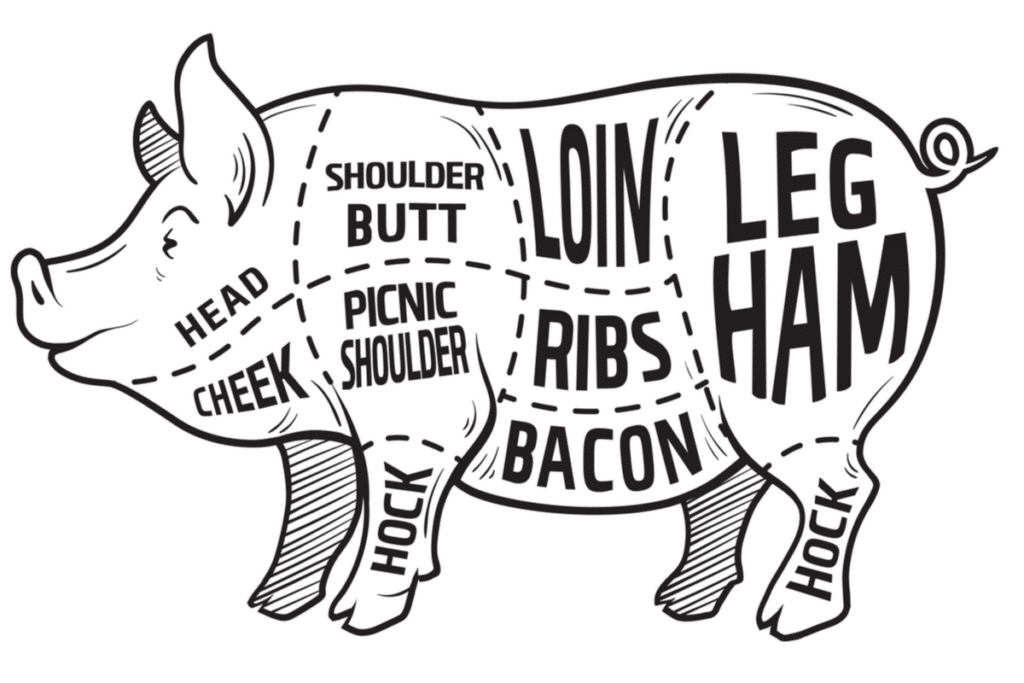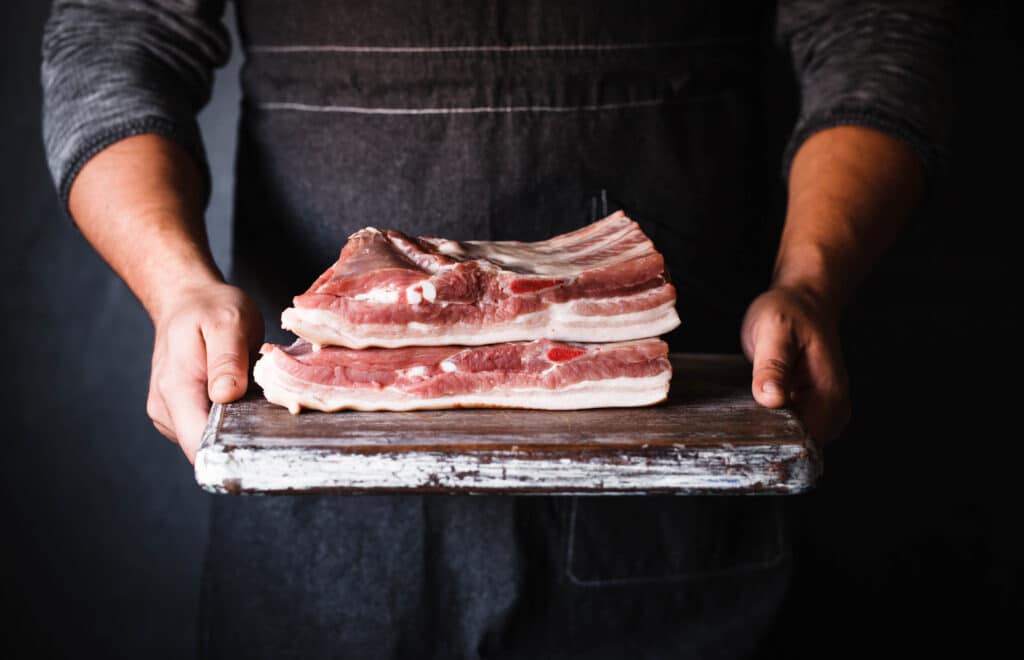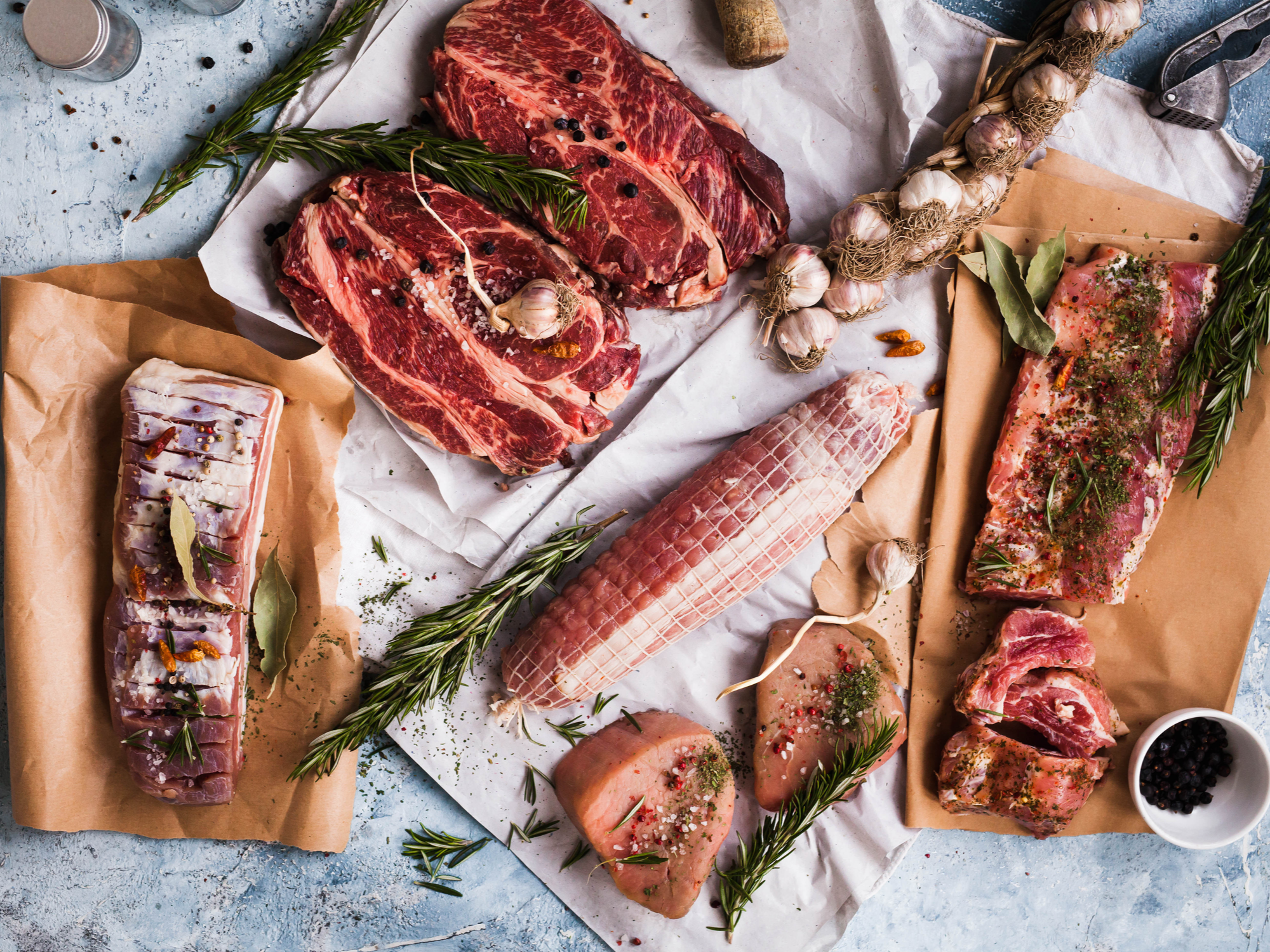

Filling out a cut sheet doesn’t need to be hard, in fact, it should be a fun part of the process. We raise and sell hogs by the whole or half from our farm. Our customers often ask us how to fill out the pork cut sheet from the butcher (the form the butcher uses to determine how you want your half processed). Our first time filling out a pork cut sheet also overwhelmed us. It is hard to understand what that cut of meat you see on the grocery store shelf actually is in butchering jargon. This article will help you determine what you need out of your whole animal purchase, whether you are ordering from us, another local farmer, or raising your own animals.
The very first thing you need to determine before even touching a pork cut sheet is how many people you want to feed. Smaller households have more options because larger cuts can be divided and used in different ways. Larger families have less of that luxury and must choose which cuts are important to them. You also may be a smaller family, but you may want to use your meat more for entertaining and less for everyday meals, in which case you would choose large cuts.
Today, I am focusing on pork cuts because that is what we are raising. Soon we will have cows and I will get into sides of beef when needed. Pork is confusing because some cuts are named after regions they aren’t even in, like the butt. Many don’t know bacon comes from the belly, which is actually the lower side of the hog. All animals are processed into primal cuts. The primal is the main muscle region that the butcher will cut the animal into before processing it further. You always have the option to have your meat cut into primals and leave it at that, although they will be exceptionally large and untrimmed. Pork primals are shoulder, leg, loin, and belly.


These are going to be your main cuts of pork. All remaining meat is trimmed off the bone, separated from fat and sinew, and then ground. You always have the option to grind all the hog or any of the cuts if you do not desire them. Ground pork is packaged fresh or used for sausage. Our butcher will grind, mix in the perfect fat ratio, season, encase, and smoke sausage links for the perfect ready-to-eat sausage.
We are not big fans of breakfast sausage, so we pick up our ground pork fresh immediately after processing and mix it with our own seasonings. We have made chorizo and bangers and will continue to experiment more in the future.
Here is the big important note: farmers charge a price per pound based on hanging weight, this is the weight of the animal just before being cut into primals with no internal organs and often skinned. That is the amount of meat the farmer is selling to you, so you can make the decision on how it is cut. The butcher then charges you for a standard cut and wrap fee (per pound x hanging weight) which includes all the “normal cuts” and wrapping the meat, so it is freezer ready. Additional charges are made if you choose alternative cuts, wrapping, or curing. If you merely had the animal cut into primals you would get back exactly what hanging weight was, possibly minus a little fat trimming so they can properly find the cuts.
Every cut that is made on the animal includes some form of “waste” or trimming. In the example above of the boneless pork loin, this would mean there will be some pork left on the bones that you usually see in a bone-in pork chop, the butcher would trim away that meat and add it to your grinding meat. So, every time a cut is made around these bones there is always a little bit of waste. Think about stripping the leftovers off your Thanksgiving turkey, there will always be something left on the bones, no matter how hard you try. In addition, every cut is trimmed so that it is neat and square which makes it best for cooking evenly. All trimmings get added to the grinder with the appropriate fat ratio. In the end, there is an expected weight loss of 25-30% off hanging weight consisting of bone, unusable fat, and some trimmings that are difficult to strip. So, remember this while filling out your pork cut sheet.
Most importantly enjoy the process! Learn to use new cuts of meat or learn to use the old ones in new ways. Home-raised meat is the best you can get so honor that with your best effort in the kitchen. Have you ever been confused about pork cut sheets? Do you have more questions that weren’t answered? Comment below.




No spam, notifications only about current blog updates.
4 Responses
Thanks so much for explaining this process! We are taking our hogs to butcher tomorrow,and the process of filling out the cut sheet was causing much consternation this evening. Now I feel like we can approach the process with a little more understanding. Thank you!
I am so glad it was helpful!
Question – if I would like primal cuts (instead of the traditional ham, bacon, chops, ground, etc.) for a half hog, do I just tell the butcher that?
Yes, most butchers should easily be able to accomodate that, just be prepared to pick it up fresh.